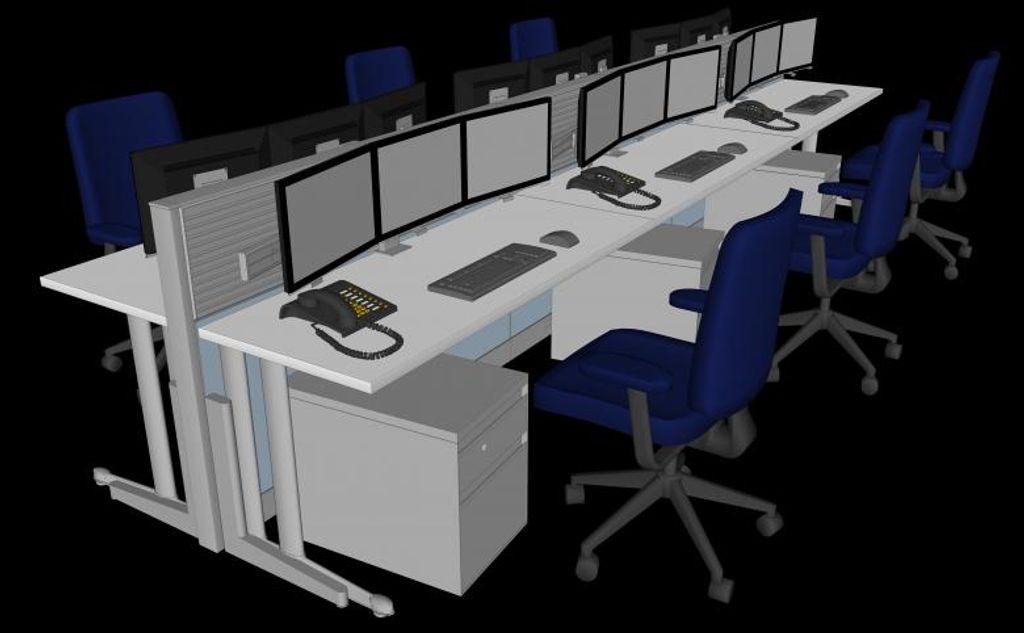
Efficient email management is crucial for office coordinators to stay organized and ensure smooth communication. This article explores various strategies to improve email management, including streamlining email communication, organizing incoming emails, setting up email filters, managing email subscriptions, effective email filing and archiving, optimizing email search and retrieval, and managing email attachments. By implementing these strategies, office coordinators can enhance productivity, reduce clutter, and easily access important information when needed.
Efficient email communication is crucial for office coordinators to stay organized and productive. Here are some tips to streamline your email communication:
Implementing these strategies will help you manage your email communication more effectively.
Organizing incoming emails is crucial for efficient email management. By implementing a systematic approach, office coordinators can ensure that important emails are not overlooked and can be easily accessed when needed. Here are some tips to help you organize your incoming emails:
Setting up email filters is an essential step in improving email management. Filters allow you to automatically categorize and organize incoming emails based on specific criteria. By setting up filters, you can ensure that important emails are prioritized and easily accessible, while less important emails are sorted into appropriate folders. Here are some key steps to follow when setting up email filters:
Managing email subscriptions is an important aspect of efficient email management. It involves identifying and organizing subscriptions to ensure a clutter-free inbox. Here are some tips for managing email subscriptions:
Implementing these strategies can help you stay organized and reduce email overload.

Creating a well-organized folder structure is essential for efficient email management. By categorizing your emails into different folders, you can easily locate and access specific emails when needed. Here are some tips for creating an effective folder structure:
Implementing a logical folder structure will save you time and reduce the clutter in your inbox.
Email labels and tags are powerful tools for organizing and categorizing your emails. By assigning labels and tags to your emails, you can easily group related messages together and quickly find them when needed. Labeling emails allows you to create a customized organizational system that suits your specific needs.
Implementing email labels and tags can greatly improve your email management efficiency. Here are some tips to make the most out of this feature:
By effectively using email labels and tags, you can streamline your email workflow and easily locate important messages.
Implementing an email archiving system is crucial for efficient email management. It allows office coordinators to securely store and organize important emails for future reference. Here are some key steps to consider:
Tip: When implementing an email archiving system, it's important to involve key stakeholders and provide training to ensure proper usage and adherence to company policies.
By implementing an email archiving system, office coordinators can effectively manage and retrieve important emails, improving overall productivity and organization.

When it comes to managing a large volume of emails, utilizing advanced search techniques can be a game-changer. By mastering the art of email search, you can quickly find the information you need without wasting time scrolling through your inbox. Here are some tips to help you make the most of advanced search techniques:
Remember, mastering advanced search techniques can save you valuable time and make email management much more efficient.
Saved search filters are a powerful tool for quickly finding specific emails in your inbox. By creating custom filters based on specific criteria, you can streamline your email search process and save time. Here are some tips for creating effective saved search filters:
Tip: Consider creating saved search filters for frequently searched emails, such as those related to important projects or clients. This can help you quickly access relevant information without manually searching for them every time.
Remember, saved search filters can be a valuable tool in managing your email inbox efficiently.
Email search operators are powerful tools that can help you quickly and efficiently find specific emails in your inbox. By using these operators, you can narrow down your search criteria and retrieve the exact information you need. Here are some commonly used email search operators:
from:manager@example.com.meeting agenda by using the operator subject:"meeting agenda".has:attachment.Remember to combine these operators to create more specific search queries. For example, you can search for all emails from your manager with attachments by using the query from:manager@example.com has:attachment.
Using email search operators can save you time and make it easier to locate important emails in your inbox. Experiment with different operators to find the ones that work best for you.

When it comes to managing email attachments, organization is key. By organizing and categorizing your attachments, you can easily locate and access important files whenever you need them. Here are some tips to help you stay organized:
Cloud storage solutions offer a convenient and secure way to manage email attachments. By storing attachments in the cloud, office coordinators can easily access and share files with colleagues, even when they are not in the office. Cloud storage also provides a backup for important attachments, reducing the risk of data loss.
When implementing cloud storage solutions, it is important to consider the following:
Tip: Regularly review and clean up attachments in the cloud storage to free up space and ensure efficient file management.
Scanning and digitizing paper documents can greatly improve email management for office coordinators. By converting physical documents into digital files, you can easily store, search, and retrieve important information without the need for physical storage space.
To effectively scan and digitize paper documents, consider the following:
By following these steps, you can streamline your email management process and reduce the reliance on physical paper documents.
In conclusion, effective email management is crucial for office coordinators to maintain productivity and organization. By implementing strategies such as email filtering and automated responses, coordinators can streamline their email workflow and reduce the risk of important messages being overlooked. Additionally, regularly decluttering the inbox and setting clear email communication guidelines can help improve overall efficiency. With these practices in place, office coordinators can better manage their email correspondence and focus on other important tasks.
You can streamline email communication by setting clear expectations, using concise and informative subject lines, and avoiding unnecessary cc's and reply-alls.
Some tips for organizing incoming emails include creating folders or labels based on categories, using filters to automatically sort emails, and regularly archiving or deleting unnecessary emails.
To set up email filters, you can access the settings of your email client or provider and create rules or filters based on specific criteria such as sender, subject, or keywords.
Managing email subscriptions helps reduce inbox clutter, ensures important emails are not missed, and improves overall email organization and productivity.
The recommended folder structure for effective email filing may vary depending on personal preferences and work requirements. However, a common approach is to create folders based on projects, clients, or specific categories.
You can utilize advanced search techniques by using search operators, specifying search criteria such as sender, subject, or date range, and utilizing Boolean operators to refine your search.